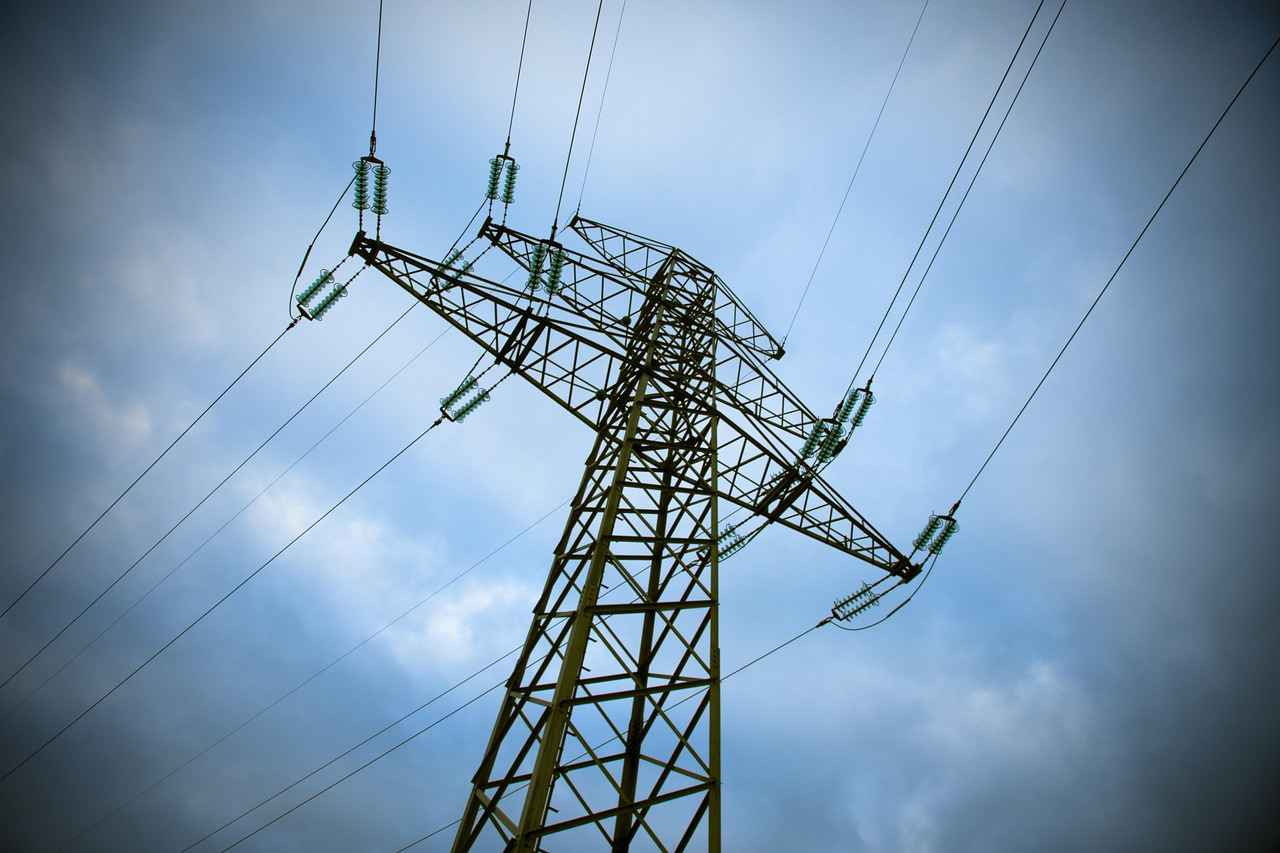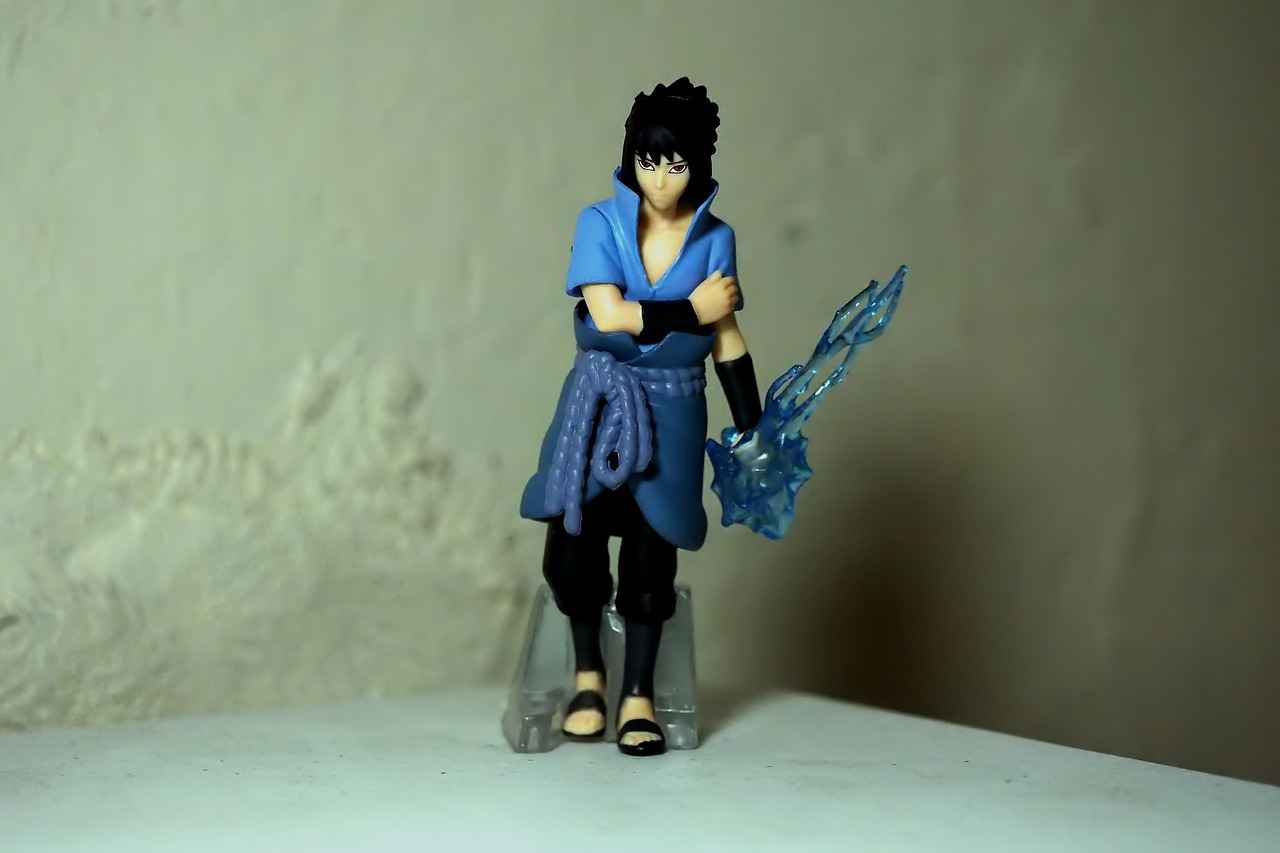This article explores the intricate layers of Naruto Uzumaki’s abilities and the destiny that shapes his journey. As one of the most iconic characters in the world of shinobi, Naruto’s evolution not only affects his own life but also leaves a profound impact on his friends and adversaries.
The Origin of Naruto’s Powers
Naruto’s abilities are deeply rooted in his lineage. Born as the son of Minato Namikaze, the Fourth Hokage, and Kushina Uzumaki, Naruto inherits a unique combination of skills. His connection with the Nine-Tails enhances his chakra levels, making him a formidable ninja.
The Role of Sage Mode
One of Naruto’s most significant transformations is the mastery of Sage Mode. This powerful state amplifies his strength and perception, allowing him to engage in battles with enhanced strategies and foresight.
- Training with Fukasaku: Naruto’s rigorous training with Fukasaku, a legendary sage, is crucial for mastering this form. The lessons learned during this period are pivotal in his transformation.
- The Importance of Natural Energy: Understanding how to harness natural energy is vital for Naruto’s growth. This energy plays a crucial role in his fighting style and overall power.
- Combat Applications of Sage Mode: The practical applications of Sage Mode are evident in several key battles, showcasing its decisive role in Naruto’s victories.
Impact on Team Dynamics
Naruto’s growth influences his relationships within Team 7. His evolving abilities foster stronger bonds and enhance their collective missions, illustrating the importance of teamwork in achieving their goals.
The Legacy of the Sage of Six Paths
The legacy of the Sage of Six Paths significantly shapes Naruto’s destiny. His connection to this ancient figure bestows him with unique abilities that come with immense responsibility.
Shaping the Future of Shinobi
Naruto’s actions not only shape his own fate but also the future of the entire shinobi world. His choices regarding peace and conflict have lasting implications for ninja society.
The Final Battle and Its Implications
The climax of Naruto’s journey culminates in a final battle that tests his strength and resolve. This confrontation, particularly with Sasuke, is emblematic of their complex friendship and the themes of power and redemption.
Lessons Learned from the Battle
The final battle imparts crucial lessons about friendship, sacrifice, and the true meaning of strength, resonating throughout the series and leaving a lasting impact on its characters.
Conclusion: Naruto’s Enduring Legacy
Naruto’s journey is a testament to growth, resilience, and the power of friendship. His legacy continues to inspire fans and characters alike, proving that true strength lies in understanding oneself and others.

The Origin of Naruto’s Powers
To truly understand Naruto Uzumaki’s powers, one must delve into his rich lineage and the profound impact of the Nine-Tails, or Kyuubi, that resides within him. Naruto’s heritage is not merely a backdrop; it is the very foundation of his abilities and his evolution as a ninja.
Born to Minato Namikaze, the Fourth Hokage, and Kushina Uzumaki, a kunoichi from the Uzumaki clan known for their strong chakra, Naruto inherits a unique combination of traits. His father’s Hokage legacy and his mother’s Uzumaki bloodline provide him with immense potential. However, the presence of the Nine-Tails adds a complex layer to his powers.
The Nine-Tails was sealed within Naruto at birth, a burden that initially posed challenges. This immense power, however, also became a source of strength as he learned to control it. The journey of mastering the Nine-Tails is crucial to Naruto’s character development. It symbolizes his struggle against prejudice and his quest for acceptance, which ultimately fuels his determination to become a Hokage.
Throughout the series, Naruto’s relationship with the Nine-Tails evolves from one of animosity to partnership. This transformation is pivotal, as it signifies his growth not only as a ninja but also as a person. By embracing the Nine-Tails, Naruto taps into a vast reservoir of chakra, enhancing his combat abilities and resilience.
Moreover, Naruto’s lineage connects him to the rich history of the shinobi world. His heritage is intertwined with the Uzumaki clan’s legacy, known for their longevity and powerful chakra. This connection not only enriches his abilities but also places him at the center of significant events within the series.
In conclusion, Naruto’s powers are deeply rooted in his lineage and the influence of the Nine-Tails. Understanding this origin is essential to appreciating his journey and the impact he has on the shinobi world. As he grows, so does his understanding of his heritage, shaping his destiny and the future of those around him.

The Role of Sage Mode
Sage Mode is a transformative state that significantly enhances Naruto Uzumaki’s strength and perception. This unique ability allows him to tap into natural energy, granting him heightened senses and physical prowess. In this section, we will explore the profound effects of mastering Sage Mode on Naruto’s combat strategies and his interactions with other characters throughout the series.
When Naruto first enters Sage Mode, he experiences a substantial boost in his combat effectiveness. His physical abilities are augmented, allowing him to execute high-speed maneuvers and powerful jutsu that can overwhelm opponents. This newfound strength not only makes him a formidable fighter but also enhances his tactical approach to battles. For instance, during the Fourth Great Ninja War, Naruto’s mastery of Sage Mode plays a crucial role in his ability to lead and coordinate with his allies effectively.
Moreover, Sage Mode allows Naruto to sense chakra and predict enemy movements, which is vital in combat scenarios. This heightened perception enables him to assess threats quickly and make strategic decisions on the fly. As a result, his interactions with fellow shinobi, such as Sakura Haruno and Kakashi Hatake, evolve, as they rely on his enhanced abilities during missions.
Additionally, the training Naruto underwent with Fukasaku, one of the legendary Sage Toads, was instrumental in developing his Sage Mode. This rigorous training not only honed his skills but also taught him the importance of balance between natural energy and his own chakra. The lessons learned during this period are reflected in his approach to teamwork and leadership, as he becomes more attuned to the needs of his comrades.
In conclusion, Sage Mode is not just a power-up for Naruto; it fundamentally alters his approach to combat and relationships within the shinobi world. By mastering this form, he becomes a more capable leader and a more effective ally, showcasing the intricate connection between strength and strategy in the world of Naruto.
Training with Fukasaku
Naruto’s training with Fukasaku at Mount Myoboku is a transformative chapter in his journey as a ninja. This rigorous training not only enhances his skills but also deepens his understanding of the world around him. Fukasaku, as a wise and experienced sage, plays a crucial role in guiding Naruto through the complexities of Sage Mode.
During this training, Naruto learns to connect with natural energy, a fundamental aspect of Sage Mode. This energy is derived from the environment, and mastering its flow is vital for harnessing the full potential of Sage Mode. Fukasaku emphasizes the importance of remaining calm and focused, teaching Naruto to synchronize his chakra with the natural world.
- Key Lessons Learned:
- Patience: Naruto discovers that patience is essential when gathering natural energy. Rushing can lead to failure.
- Balance: He learns to balance his own chakra with natural energy, which is crucial for maintaining Sage Mode.
- Awareness: The training fosters a heightened awareness of his surroundings, enabling him to sense the energy around him.
This training period is not just about physical enhancement; it also marks a significant transformation in Naruto’s character. He evolves from a brash and impulsive ninja into a more strategic and thoughtful leader. The rigorous practice instills a sense of responsibility, as he realizes the weight of his powers and the impact they have on his friends and the world.
Moreover, the bond formed between Naruto and Fukasaku is pivotal. This relationship serves as a mentor-student dynamic that enriches Naruto’s journey, providing him with wisdom that extends beyond combat. Fukasaku’s teachings resonate throughout Naruto’s subsequent battles, shaping his approach and decision-making.
In conclusion, Naruto’s training with Fukasaku is a crucial milestone that significantly enhances his abilities and character. It prepares him for future challenges and solidifies his role as a protector of the shinobi world. The lessons learned during this time echo throughout his journey, influencing not only his fighting style but also his relationships with others.
The Importance of Natural Energy
in Naruto’s Sage Mode cannot be overstated. This energy, which is derived from the environment, plays a crucial role in enhancing Naruto Uzumaki’s abilities as a ninja. In this section, we will explore how Naruto learns to harness this vital force and the profound implications it has on his overall power and fighting style.
Naruto’s journey to mastering Sage Mode begins with his training under the wise toad sage, Fukasaku. During this rigorous training, Naruto learns to balance his chakra with the surrounding natural energy, allowing him to enter Sage Mode effectively. This transformation not only amplifies his physical strength but also significantly enhances his sensory perception, enabling him to detect the presence of hidden enemies and anticipate their moves.
| Benefits of Natural Energy | Implications for Naruto |
|---|---|
| Enhanced Strength | Increased combat effectiveness against powerful foes. |
| Heightened Reflexes | Improved ability to dodge attacks and counter effectively. |
| Advanced Senses | Ability to sense chakra and predict enemy movements. |
Moreover, the mastery of Natural Energy allows Naruto to utilize a range of powerful techniques, including the Rasen Shuriken and various other jutsu that require immense chakra control. This ability to tap into Natural Energy not only sets Naruto apart from other shinobi but also solidifies his role as a leader among his peers.
As Naruto continues to grow in strength, the implications of harnessing Natural Energy extend beyond just personal power. It symbolizes a deeper connection to the world around him, emphasizing the importance of harmony between nature and the shinobi way of life. This balance ultimately shapes Naruto’s fighting style, making him a formidable opponent who respects the very essence of the world he protects.
In conclusion, Natural Energy is more than just a resource for Naruto; it is a fundamental aspect of his identity as a ninja. By mastering this energy, Naruto not only enhances his own abilities but also embodies the principles of unity and respect for nature that are central to the shinobi philosophy.
Combat Applications of Sage Mode
The are essential to understanding Naruto Uzumaki’s fighting capabilities. Sage Mode is a powerful transformation that allows Naruto to tap into natural energy, significantly enhancing his physical abilities, perception, and combat strategies. This section outlines key battles where Naruto’s Sage Mode played a decisive role in his victories.
- Battle Against Pain: One of the most significant displays of Sage Mode occurs during Naruto’s confrontation with Pain. Utilizing Sage Mode, Naruto gains heightened sensory perception, allowing him to anticipate Pain’s moves and counter them effectively. His ability to sense chakra and predict enemy actions turns the tide of battle, showcasing the strategic advantages of Sage Mode.
- Fight with Tobi: In his battle against Tobi, Naruto’s mastery of Sage Mode proves critical. The enhanced strength and speed enable him to keep up with Tobi’s rapid movements, while his use of natural energy allows for powerful Rasenshuriken attacks that inflict substantial damage. This battle highlights how Sage Mode amplifies Naruto’s already formidable techniques.
- Confrontation with Madara: During the Fourth Great Ninja War, Naruto’s Sage Mode is instrumental in his fight against Madara Uchiha. The combination of Sage Mode and Kurama’s chakra provides Naruto with immense power, allowing him to take on one of the strongest adversaries in the series. His strategic use of Sage Mode enhances his teamwork with Sasuke, showcasing how this transformation can elevate collaborative combat.
- Final Battle Against Kaguya: In the climactic battle against Kaguya Otsutsuki, Naruto’s Sage Mode is pivotal. It enhances his reflexes and chakra control, enabling him to execute complex strategies alongside Sasuke. The ability to sense Kaguya’s movements and adapt in real-time illustrates the versatility of Sage Mode in high-stakes scenarios.
In conclusion, the application of Sage Mode in Naruto’s battles not only demonstrates his growth as a ninja but also emphasizes the importance of mastering this powerful technique. Each battle showcases unique aspects of Sage Mode, from enhanced sensory perception to increased physical prowess, proving that it is a vital component of Naruto’s combat effectiveness.
Impact on Team Dynamics
Naruto Uzumaki’s evolution as a ninja profoundly influences the relationships within Team 7. As he grows in power, his interactions with teammates—Sakura Haruno and Sasuke Uchiha—shift dramatically, impacting their collective missions and personal growth.
Initially, Naruto is seen as the underdog, often struggling to keep up with his more skilled teammates. However, as he masters new abilities, particularly Sage Mode and the powers of the Sage of Six Paths, he begins to take on a leadership role. This transition not only boosts his confidence but also inspires his teammates to push their own limits.
- Empowerment of Teammates: Naruto’s growth encourages Sakura and Sasuke to strive for improvement. Sakura, motivated by Naruto’s determination, enhances her medical ninjutsu and combat skills. Sasuke, driven by rivalry, seeks to unlock his own potential, leading to a healthy competitive dynamic.
- Shift in Team Roles: As Naruto becomes stronger, the team’s roles evolve. He often leads the charge in battles, while Sakura and Sasuke support him, showcasing their unique strengths. This synergy fosters a sense of unity and trust among the trio.
- Emotional Bonds: Naruto’s journey also deepens his emotional connections with his teammates. His unwavering belief in their abilities strengthens their bonds, transforming Team 7 into a family that supports one another through trials and tribulations.
As they face formidable foes together, the dynamics within Team 7 become a testament to their growth. Each member learns to rely on one another, creating a cohesive unit that tackles challenges with resilience and strategy. Naruto’s evolving abilities not only shape his destiny but also redefine the collective mission of Team 7, paving the way for their legacy as a powerful and united force in the shinobi world.
In conclusion, Naruto’s growth in power significantly influences the dynamics within Team 7. His journey from an underdog to a formidable leader not only impacts his relationships but also enhances the effectiveness of their collective missions, ultimately solidifying their place in the annals of shinobi history.

The Legacy of the Sage of Six Paths
is a pivotal theme in the Naruto series, representing the profound impact of history on the present. This legacy is not merely a relic of the past; it is a living force that shapes the destiny of Naruto Uzumaki and the shinobi world at large.
As the reincarnation of Asura Ōtsutsuki, Naruto inherits the powers and responsibilities bestowed by the Sage of Six Paths, Hagoromo Ōtsutsuki. This connection grants him extraordinary abilities, including the mastery of chakra and the ability to communicate with tailed beasts. However, with great power comes even greater responsibility. Naruto must navigate the complexities of leadership and the expectations placed upon him by his peers and the world.
The journey of embracing this legacy is not without its challenges. Naruto grapples with the weight of expectations, striving to honor the teachings of the Sage while forging his own path. He learns that true strength lies not just in power but in the ability to unite people and foster peace. This realization is crucial as he faces formidable foes and conflicts that threaten the very fabric of the shinobi world.
Moreover, the legacy of the Sage serves as a reminder of the cyclical nature of conflict and resolution. Naruto’s interactions with other characters, particularly Sasuke Uchiha, highlight the contrasting ideologies stemming from their respective legacies. While Naruto embodies hope and reconciliation, Sasuke represents the darker aspects of power and revenge. Their dynamic illustrates the ongoing struggle between these two paths.
Ultimately, Naruto’s legacy as the Sage’s successor is a testament to his growth as a character. It reflects his commitment to breaking the cycle of hatred and fostering a new era of understanding among shinobi. As he embraces his role, Naruto not only shapes his own destiny but also paves the way for future generations, ensuring that the teachings of the Sage of Six Paths endure.
Receiving the Sage’s Powers
is a pivotal moment in Naruto Uzumaki’s journey, marking a significant evolution in his abilities and responsibilities as a leader. The connection to the Sage of Six Paths not only enhances Naruto’s combat skills but also bestows upon him a profound legacy that shapes the future of the shinobi world.
Upon receiving the Sage’s powers, Naruto gains access to unique abilities such as truth-seeking orbs, enhanced sensory perception, and the capability to utilize Senjutsu at an advanced level. These powers are not merely tools for battle; they signify the weight of leadership and the expectations placed upon him as a beacon of hope for his people.
One of the most significant aspects of this transformation is the responsibility that accompanies such strength. As Naruto embraces his new abilities, he must navigate the complexities of leadership, ensuring that he uses his power not for personal gain but for the greater good. This sense of duty is evident in his interactions with allies and adversaries alike, as he strives to foster peace in a world fraught with conflict.
Moreover, the Sage’s powers allow Naruto to connect with the spiritual essence of the shinobi, granting him insights into the past and future of their world. This connection deepens his understanding of the cyclical nature of conflict and the importance of breaking the cycle through compassion and understanding. In this sense, Naruto’s journey becomes not just a personal quest for strength but a collective journey for all shinobi.
In conclusion, is a transformative experience for Naruto, intertwining his fate with that of the shinobi world. It emphasizes the importance of responsibility and the impact of leadership, as Naruto learns to wield his abilities with wisdom and foresight, shaping a brighter future for all.
Shaping the Future of Shinobi
Naruto Uzumaki’s journey has been a transformative force in the shinobi world, influencing not only his own fate but also the destinies of countless others. As a character who embodies the ideals of perseverance and friendship, Naruto’s choices have far-reaching implications for peace and conflict within ninja society.
- Promotion of Peace: One of Naruto’s most significant impacts is his unwavering commitment to peace. By advocating for understanding and cooperation among villages, he seeks to break the cycle of hatred and violence that has plagued the shinobi world for generations.
- Conflict Resolution: Naruto’s ability to empathize with former enemies, such as Nagato and Sasuke, demonstrates his unique approach to conflict resolution. His willingness to listen and find common ground has led to remarkable changes in perspectives, fostering unity.
- The Evolution of Ninja Society: Naruto’s ascension to Hokage represents a new era for the shinobi world. His leadership style emphasizes collaboration, innovation, and the importance of bonds, encouraging a shift from traditional norms to a more inclusive society.
Furthermore, Naruto’s powers, such as the Rasengan and Sage Mode, serve as symbols of his growth and determination. These abilities not only enhance his combat effectiveness but also inspire those around him to strive for greatness. Consequently, his actions have a ripple effect, motivating younger generations to pursue their dreams and contribute positively to the shinobi world.
In conclusion, Naruto’s choices and powers are pivotal in shaping the future of the shinobi world. His journey emphasizes the importance of understanding, compassion, and resilience, ultimately paving the way for a brighter and more harmonious future for all.

The Final Battle and Its Implications
Naruto’s final battle represents a pivotal moment in his journey as a shinobi. The stakes are incredibly high, not only for Naruto but for the entire shinobi world. This confrontation serves as a testament to his growth, the bonds he has formed, and the values he has fought for throughout his life.
During this climactic fight, several revelations come to light. Naruto faces off against Sasuke, his long-time friend and rival. This battle is not merely a physical confrontation; it embodies their conflicting ideologies and the choices they have made. As they clash, both characters reflect on their pasts, revealing deep-seated emotions and motivations that have driven their actions. The audience witnesses the culmination of their rivalry, which has been building since childhood.
The implications of this battle extend far beyond personal victories. The outcome influences the future of the shinobi world, as Naruto and Sasuke’s decisions will shape the next generation of ninjas. Their fight symbolizes the struggle between hope and despair, showcasing how far they have come and the lessons they have learned. The battle ultimately leads to a moment of understanding and reconciliation, emphasizing the importance of friendship and unity in overcoming conflict.
Furthermore, Naruto’s legacy is solidified through this fight. He emerges not just as a powerful ninja but as a true leader who embodies the ideals of peace and cooperation. The battle serves as a reminder that strength lies not only in power but in the ability to connect with others and foster understanding.
In conclusion, Naruto’s final battle is a significant turning point that encapsulates his journey. The stakes, revelations, and lasting implications of this confrontation highlight the essence of his character and the enduring impact he has on the shinobi world. His legacy will inspire future generations, reminding them of the importance of friendship, understanding, and the relentless pursuit of peace.
Confrontation with Sasuke
The confrontation between Naruto and Sasuke stands as one of the most pivotal moments in the Naruto series, marking a profound turning point in their relationship and the overarching narrative. This battle encapsulates not only their individual growth but also the emotional weight of their shared history.
Initially, Naruto and Sasuke’s relationship is rooted in friendship and rivalry. However, as the series progresses, their paths diverge dramatically due to various circumstances, including personal struggles and differing ideologies. This culminates in their epic battle, which serves as a catalyst for change, forcing both characters to confront their beliefs, motivations, and the consequences of their actions.
During the battle, the emotional intensity is palpable. Naruto fights not just to win but to reach out to Sasuke, hoping to bring him back from the darkness that has consumed him. This struggle highlights the themes of redemption and the enduring bonds of friendship. The fight becomes a metaphor for their inner turmoil and the choices they have made, reflecting the broader struggle between light and darkness within the shinobi world.
Moreover, the confrontation is significant for its thematic depth. It addresses questions of identity, loyalty, and the burden of power. As they clash, both Naruto and Sasuke must grapple with their evolving identities and the legacy they wish to leave behind. This battle not only tests their physical abilities but also challenges their emotional resilience, ultimately leading to a resolution that reshapes their relationship.
In conclusion, the battle between Naruto and Sasuke is not merely a fight; it is a profound exploration of their characters and the essence of their friendship. The lessons learned during this confrontation resonate throughout the series, reminding viewers of the importance of understanding, forgiveness, and the strength found in unity.
Lessons Learned from the Battle
The final confrontation between Naruto and Sasuke is not merely a clash of power; it serves as a profound exploration of friendship and the burdens that accompany great strength. As these two former friends turned rivals face off, they embody the complexities of their shared past, revealing essential truths about the nature of conflict and reconciliation.
Throughout the series, Naruto’s unwavering belief in friendship has been a guiding principle. In this climactic battle, he demonstrates that true strength lies not just in raw power but in the ability to understand and forgive. The lessons learned during this fight resonate deeply with the audience, emphasizing that empathy and compassion are vital components of any relationship.
One of the crucial insights gained is the idea that power can be both a blessing and a curse. Naruto and Sasuke’s journey illustrates that those who wield great power must also bear the responsibility that comes with it. This theme is particularly evident when their fight reaches a point where both characters must confront their motivations and the consequences of their actions.
| Key Lessons | Description |
|---|---|
| Understanding | The importance of seeing the world from another’s perspective. |
| Forgiveness | The ability to forgive past grievances is crucial for moving forward. |
| Responsibility | With great power comes great responsibility, a lesson both characters learn. |
Ultimately, this battle serves as a catalyst for growth for both Naruto and Sasuke, pushing them to evolve beyond their past grievances. The resolution of their conflict symbolizes the power of friendship to overcome even the most daunting challenges. As they reconcile, the audience is left with a powerful message: that true strength is found in unity and understanding.
In conclusion, the final battle between Naruto and Sasuke encapsulates the series’ core themes, providing valuable insights into the nature of power, the significance of friendship, and the importance of personal growth. These lessons not only resonate within the narrative but also inspire the audience to reflect on their own relationships and the complexities of human connection.

Conclusion: Naruto’s Enduring Legacy
Naruto Uzumaki’s journey is a profound tale of growth, power, and friendship. Throughout the series, we witness the transformation of a young boy, once shunned by his village, into a revered hero who embodies the spirit of perseverance and unity. His legacy is not merely a personal triumph; it resonates deeply within the hearts of fans and characters alike, leaving an indelible mark on the world of shinobi.
As Naruto navigated the challenges of his life, he forged strong bonds with his teammates and mentors, emphasizing the importance of friendship and collaboration. These relationships not only shaped his character but also influenced the dynamics of Team 7, showcasing how collective strength can overcome adversity. The lessons learned through these connections highlight that true power often lies in unity and understanding.
Moreover, Naruto’s evolution as a ninja is closely tied to the legacy of the Sage of Six Paths. By inheriting this legacy, he embraced a greater responsibility to foster peace in a world rife with conflict. His actions have paved the way for a new era of shinobi, one that prioritizes harmony over rivalry. This shift in perspective is a crucial aspect of his legacy, as it inspires future generations to strive for a world free from the cycle of hatred.
In conclusion, Naruto’s journey is a testament to the enduring impact of his character. His story continues to inspire fans globally, reminding them of the values of perseverance, friendship, and the quest for peace. As we reflect on his legacy, it becomes clear that Naruto Uzumaki is not just a character in a story, but a symbol of hope and resilience that will echo through the ages.
